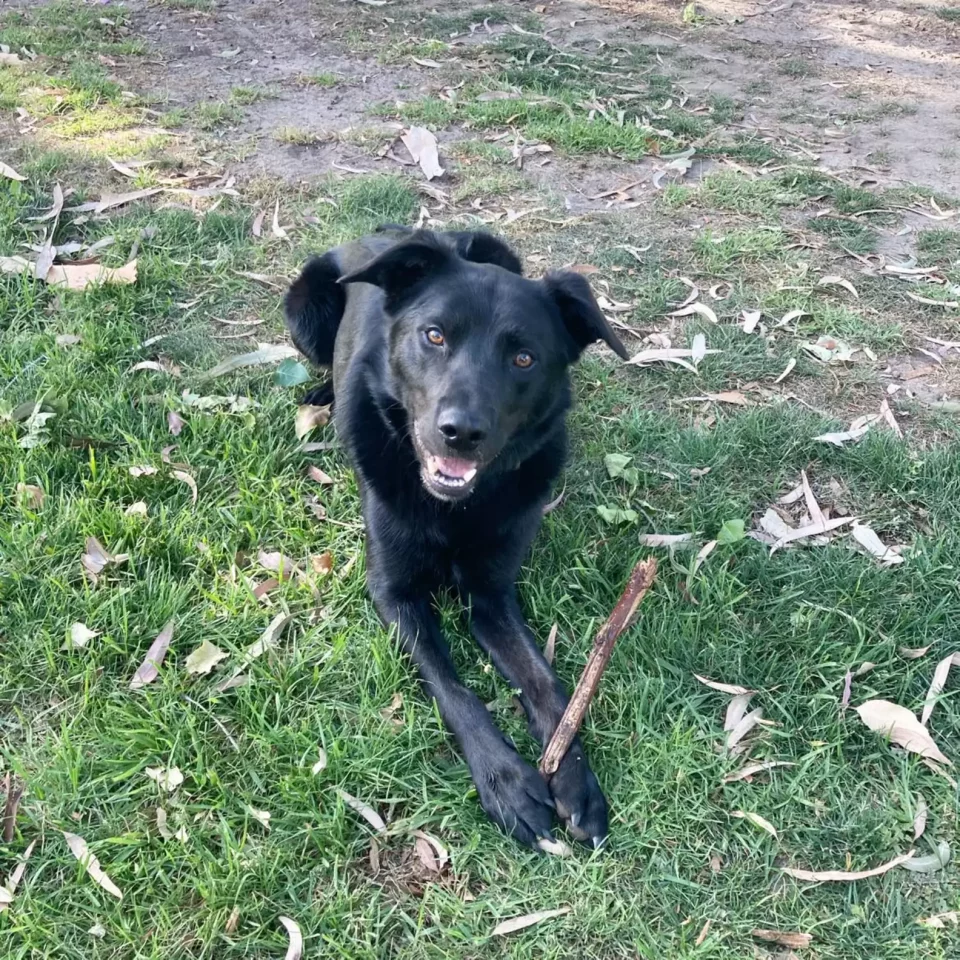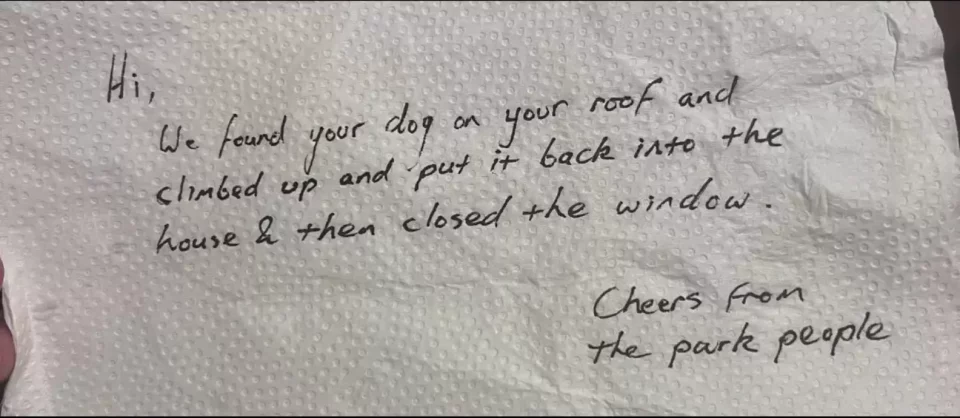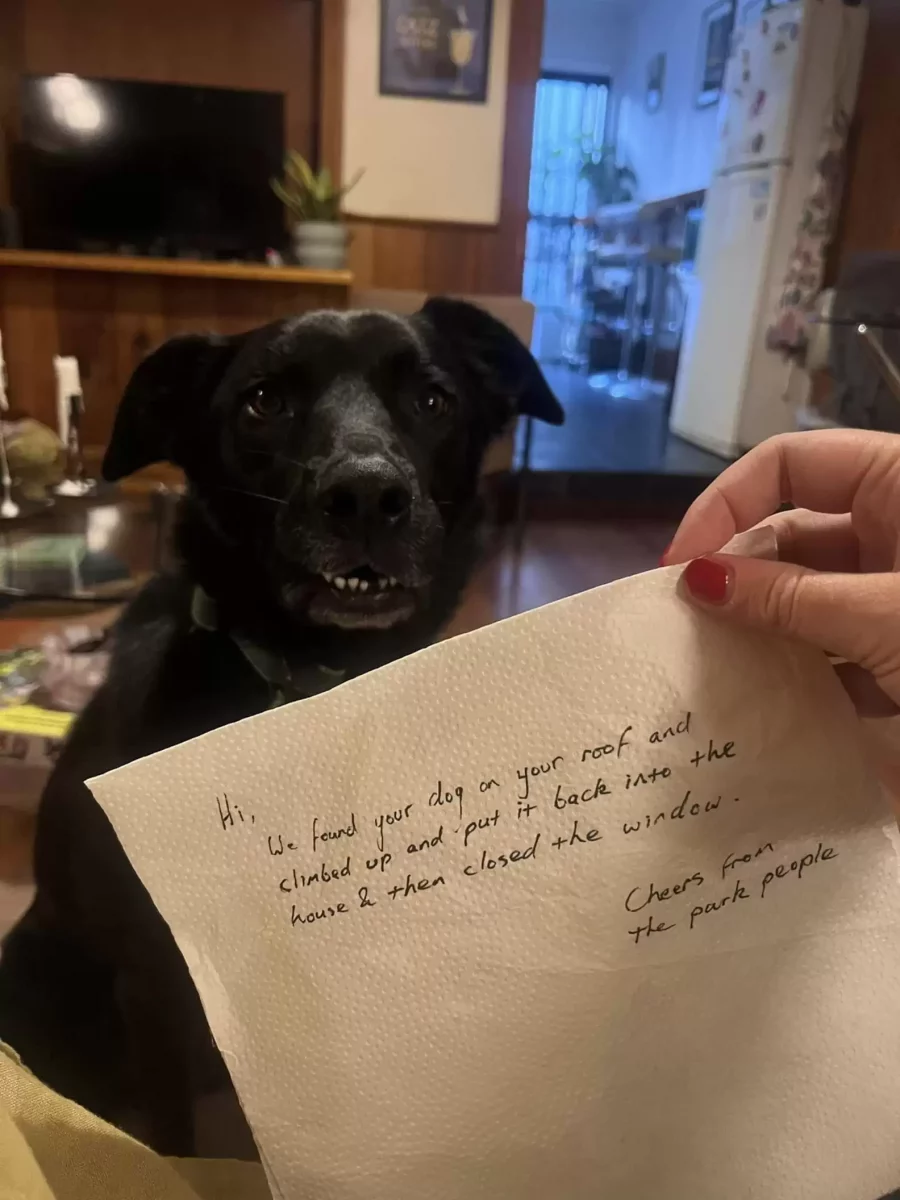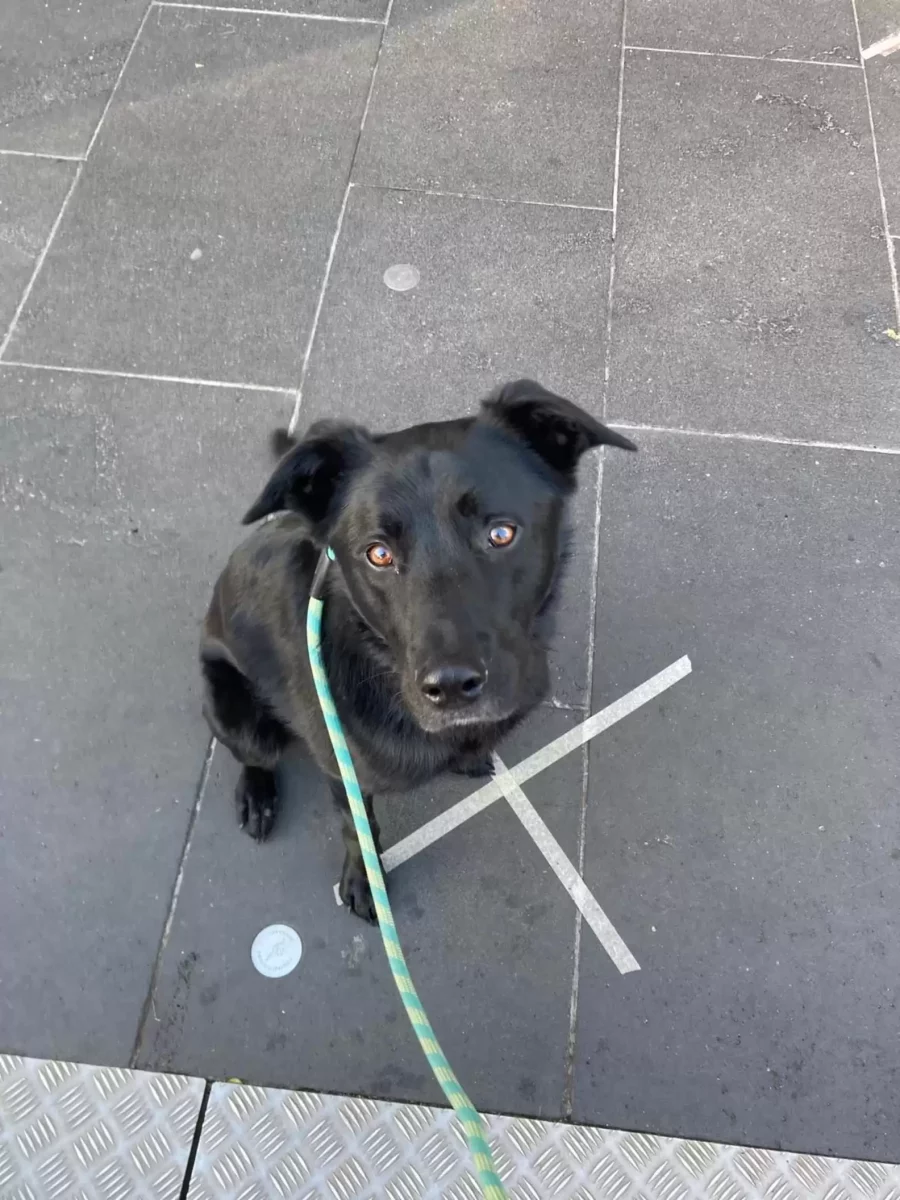Dogs are known troublemakers. However, unlike most humans, many of them don’t realize that what they are doing sometimes is going to cause problems.
To them, these so-called ‘troubles’ are just another amazing adventure, so they will keep making mischief as long as they don’t understand the consequences. It’s up to us to help them understand that sometimes, it’s better to not be curious.
In this story, we will talk about a dog whose idea of fun always lands him into trouble, but this case took it a bit too far.
He Was Found Where

Just as she was finished with doing her chores, a woman named Julia Zwar was on her way home and she saw something on her door.
As she approached the entrance of her house, she realized that it was a note. She already had a suspicion that her dog might have gotten into trouble somehow.
She said to The Dodo: Billy will stop at nothing. He’ll take any opportunity he can get.
The 5-year-old dog had a habit of getting into trouble, but most of the time, his adventures were harmless.

This time, however, Zwar was shocked by what she read on the note. The note said: Hi, we found your dog on your roof and we climbed up and put him back into the house and then closed the window. Cheers from the park people.
When she went inside the house, she saw her dog was there and was wagging his tail like nothing had ever happened.
She kept thinking how he could have found an access to the roof and ended up there.
Billy Curious Nature

It occurred to her that Billy had always been a special dog when she adopted him. He really wasn’t like the other ones, and he was always looking for something to do.
As he continued to grow up, he showed more interest in things around him. Billy wanted to see everything and do everything.
His curiosity kicked in, and this is the reason why he wanted to go on the roof. So, it’s no surprise that he went and did something like that.
The only thing that still confused her was how he got out. Then, another revelation presented itself.
On the day it happened, something was different from usual. Her housemate had rearranged some furniture, so that the bed would be near the window, which gave him the opening to go out.
Thankfully, he was spotted pretty fast by a couple of people who were on a picnic in a park and they intervened immediately.

Now that it was clear to her what caused this event to happen, Zwar had to scold Billy a little.
She said: He was excited, but then when I said his name in the ‘you’re in trouble’ tone, he dropped his head and I’m sure flashed back to moments earlier, when he was standing on the roof. If puppy eyes came from anywhere, they came from his face that evening.
In order to prevent something like this from happening again, they now always shut the window and the door in her housemate’s room.
Time has gone by since the first incident and Billy hasn’t gotten into any new trouble. Zwar and her dog continue to have their adventures in the park where she can keep an eye on him.
Zwar has said that she will keep everyone updated in case he ever gets into trouble again.
If your furry friend has gotten into some chocolate, it can be a stressful situation for any dog owner. Chocolate is a well-known hazard for dogs, and knowing how to handle this common scenario is crucial. As a seasoned dog trainer, I’ve encountered this issue more times than I can count, and I’m here to guide you through the steps to take if your dog has indulged in this forbidden treat.
When a dog consumes chocolate, it can lead to a range of health complications due to the presence of theobromine. As a responsible pet owner, being prepared for such emergencies is key. In this article, we’ll discuss the immediate actions you should take, potential symptoms to watch out for, and the importance of seeking veterinary assistance. Remember, quick and informed action can make all the difference in ensuring your dog’s well-being.
Recognizing the Signs of Chocolate Poisoning in Dogs
To ensure your dog’s well-being, it’s crucial to recognize the signs of chocolate poisoning. Here are the symptoms you should watch out for:
- Vomiting: If your dog suddenly starts vomiting, especially multiple times, it could be a sign of chocolate poisoning.
- Diarrhea: Unusual diarrhea, often accompanied by blood, is another indicator that your dog may have ingested chocolate.
- Restlessness: Your dog may appear restless or agitated after consuming chocolate due to the stimulant effects of theobromine.
- Increased Heart Rate: Monitor your dog for an elevated heart rate or abnormal heart rhythms, which are common symptoms of chocolate toxicity.
- Tremors: If you notice your dog trembling or experiencing muscle tremors, it could be a sign of chocolate poisoning.
- Seizures: In severe cases, chocolate poisoning can lead to seizures in dogs, indicating a critical situation that requires immediate veterinary attention.
By being vigilant and recognizing these symptoms promptly, you can take the necessary steps to ensure your dog receives appropriate care and treatment in case of chocolate ingestion. Remember, swift action is key to safeguarding your furry friend’s health.
Immediate Steps to Take if Your Dog Eats Chocolate
Stay Calm and Act Quickly
If your dog has consumed chocolate, the first thing to do is to stay calm. Panicking won’t help the situation. Act swiftly but with a clear mind.
Determine the Amount and Type of Chocolate Ingested
Find out how much and what type of chocolate your dog has eaten. Different types of chocolate contain varying amounts of theobromine, which is toxic to dogs.
Contact Your Veterinarian Immediately
Call your vet or an emergency animal poison control hotline right away. They will guide you on the next steps based on your dog’s size, the amount and type of chocolate ingested, and the time elapsed since consumption.
Observe and Monitor Your Dog
Keep a close eye on your dog for any symptoms of chocolate poisoning, such as vomiting, diarrhea, restlessness, increased heart rate, tremors, or seizures. Note down any changes in behavior.
Do NOT Induce Vomiting Without Professional Advice
Avoid inducing vomiting in your dog unless specifically instructed by a veterinarian. In some cases, inducing vomiting can do more harm than good, especially if a significant amount of time has passed since ingestion.
Prepare for Veterinary Treatment
Be ready to take your dog to the vet immediately. Follow their instructions carefully and provide all necessary information about the chocolate consumed and any observed symptoms.
Avoid Home Remedies
Refrain from trying any home remedies without proper veterinary guidance. It’s crucial to seek professional help to ensure the best outcome for your dog.
Keep Chocolate Out of Reach
Take preventive measures to keep chocolate and other toxic foods out of your dog’s reach in the future. Prevention is key to avoiding similar emergencies in the future.
Treatment Options for Chocolate Poisoning in Dogs
Immediate Veterinary Care
If your dog has ingested chocolate, take them to a veterinarian immediately. The vet will perform a thorough examination and provide the necessary treatment.
Induced Vomiting
Your vet may induce vomiting or use activated charcoal to prevent further absorption of theobromine.
Monitoring and Observation
After treatment, your dog may need to be monitored for symptoms of chocolate poisoning. Follow your vet’s instructions carefully during this crucial period.
Supportive Care
In severe cases, your dog might require supportive care such as intravenous fluids and medications to manage symptoms.
Follow-Up Care
Follow any post-treatment care instructions provided by your vet to ensure your dog’s full recovery.
Preventative Measures
To avoid future emergencies, keep all chocolate and cocoa-containing products out of your dog’s reach at all times.
Preventing Chocolate Poisoning Incidents in Dogs
When it comes to safeguarding your furry friend from the dangers of chocolate poisoning, prevention is key. Here are some simple yet effective tips to prevent such incidents:
Storing Chocolate Securely:
Ensure that all chocolate products are stored in places completely inaccessible to your dog. Use high shelves, locked cabinets, or sealed containers to prevent any accidental access.
Educating Family Members:
Make sure everyone in your household, including children, understands the risks of chocolate consumption for dogs. Teach them to be mindful of where they leave chocolate and the importance of keeping it away from pets.
Alternatives and Substitutes:
Consider providing your dog with safe and enjoyable treats specifically made for them. This way, you can satisfy their cravings without putting them at risk of chocolate poisoning.
Supervising Outdoor Areas:
Keep an eye on your surroundings when you’re outdoors with your dog, especially in places like parks or picnic areas where chocolate might be lying around. Promptly remove any potential hazards.
Seeking Veterinary Advice:
If you have any concerns about your dog’s health or suspect they may have ingested chocolate, don’t hesitate to contact your veterinarian for guidance. They can provide tailored advice based on your dog’s specific situation.
By implementing these preventative measures, you can significantly reduce the chances of your dog encountering chocolate and experiencing the associated risks of poisoning. Remember, a proactive approach to keeping chocolate away from your canine companion is the best way to ensure their safety and well-being.
Conclusion
So, if your furry friend happens to get their paws on some chocolate, remember to keep calm, assess the situation, and reach out to your vet right away. Avoid DIY remedies and let the professionals guide you through the best course of action. Remember, prevention is key, so always store chocolate out of reach and educate your family about the dangers. By staying proactive and prepared, you can keep your dog safe and happy.
Frequently Asked Questions
Is chocolate harmful to dogs?
Yes, chocolate is harmful to dogs due to the presence of theobromine, which can cause chocolate poisoning. Symptoms include vomiting, diarrhea, rapid breathing, and even seizures. Immediate veterinary care is crucial.
What should I do if my dog eats chocolate?
Stay calm, determine the amount and type ingested, contact a veterinarian, monitor for symptoms, and avoid inducing vomiting without professional advice. Prepare for veterinary treatment and refrain from home remedies.
How is chocolate poisoning in dogs treated?
Treatment involves immediate veterinary care, inducing vomiting or using activated charcoal to prevent theobromine absorption, monitoring for symptoms post-treatment, providing supportive care like fluids and medications when necessary, and following up with post-treatment instructions.
How can I prevent chocolate poisoning in my dog?
Preventive measures include storing chocolate securely, educating family members about the risks, providing safe treats, supervising outdoor areas, and seeking prompt veterinary advice if ingestion occurs. Proactive prevention is key to keeping your dog safe.
[no_toc]

Hey there, I’m Janet Brooks, a dog-loving student from California. I’m all about helping pups in need, especially those without homes. Me and my awesome friends work together to give shelter and love to stray dogs. Oh, and I also write blogs about dogs to share helpful info.